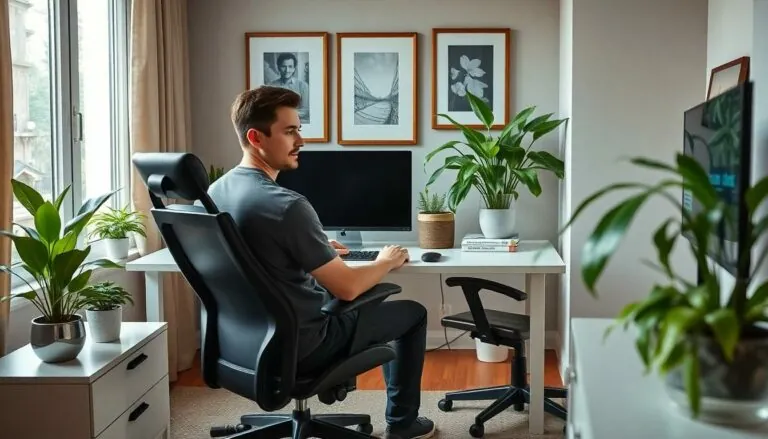Table of Contents
ToggleEver felt like your house has a secret life? One minute you’re holding onto your favorite pair of socks, and the next, they vanish into the mysterious abyss of your living room. Losing things at home isn’t just a minor inconvenience; it’s a rite of passage that leaves many scratching their heads and questioning their sanity.
Understanding the Common Causes of Losing Items
Losing items at home occurs due to various reasons. Understanding these causes can help prevent future incidents.
Disorganization in the Home
Disorganization frequently leads to misplaced belongings. When items don’t have designated spaces, finding them becomes a challenge. Cluttered surfaces create confusion, making it hard to locate essentials. Stacks of papers, unorganized drawers, and overflowing closets contribute to this problem. The more disorganized a space, the higher the chance of misplacing items. Implementing clear storage solutions can significantly reduce the risk of loss.
Stress and Distraction
Stress affects focus and memory, often resulting in lost items. A busy mind may cause someone to set down belongings without attention. Daily distractions, such as phone alerts or multitasking, can easily lead to forgetfulness. Individuals might misplace keys after rushing out the door or forget where they placed important paperwork. Reducing stress through mindfulness or planning can enhance concentration, thus minimizing the likelihood of losing items.
Effective Search Strategies

Finding lost items at home requires focused efforts. Implement specific strategies to streamline the search process.
Retracing Your Steps
Start at the last location where the item was seen. Recall activities performed since that moment. Reflecting on the scenario helps jog memories. Walk through each room in the order visited, paying attention to surfaces where items might have been placed. Revisiting these locations often uncovers forgotten areas where things tend to be left behind. Encouraging others to share their observations can provide additional insights. Ultimately, retracing steps serves as an effective way to trigger memory.
Utilizing Memory Techniques
Use mnemonic devices to enhance recollection. Associating items with specific visuals or phrases can aid memory retention. Creating a mental map of locations where things were used strengthens connections. Drawing diagrams or writing down clues offers tangible references. Additionally, mindfulness practices promote clarity and focus, making it easier to remember where items were last located. Chunking information into smaller, manageable parts assists in organizing memories. Integrating these techniques makes finding lost items more systematic and efficient.
Tools and Resources for Finding Lost Items
Finding lost items can become easier with the right tools and resources. Utilizing organized spaces and supportive technology plays a key role in the search.
Decluttering Your Space
Clutter can create obstacles in locating lost items. Establishing designated areas for belongings promotes organization. He or she can start by categorizing items into keep, donate, and discard piles. After decluttering, maintaining a clean environment helps prevent future loss. Tidying up commonly used areas like entryways and living rooms makes it simpler to spot misplaced items quickly.
Technology Aids
Mobile apps designed for helping locate lost items have gained popularity. These apps allow users to catalog their belongings and record their last known locations. RFID tags can assist in tracking items by attaching them to valuable possessions. Smart home devices, like voice assistants, enhance the search through reminders and notes. He or she can use these tools to establish a reliable system that reduces the chances of losing belongings.
Prevention Tips for the Future
Establishing preventive measures significantly reduces the chances of losing items at home.
Establishing Designated Spaces
Creating specific locations for frequently used items promotes consistency. Each family member can benefit from having their own designated areas for personal belongings. This approach simplifies locating essentials, such as keys, wallets, or glasses. For example, hooks near the entryway serve well for keys, while baskets work nicely for miscellaneous items. Designating a spot for each item eliminates confusion and helps maintain a routine. Regularly reinforcing these habits ensures that everyone adheres to the system in place.
Maintaining an Organized Environment
An organized environment minimizes distractions and enhances focus. Clear surfaces in living areas and workspaces contribute to easy item retrieval. Regular decluttering sessions can prevent the accumulation of unnecessary items, which often obfuscates essentials. Setting aside a few minutes daily for tidying allows individuals to maintain order effortlessly. Implementing storage solutions, such as shelves or containers, can also assist in keeping spaces clutter-free. Consistency in organization cultivates a calming atmosphere, conducive to effective memory recall.
Finding lost items at home doesn’t have to be a daunting task. By incorporating effective strategies and organizational tools, individuals can significantly improve their chances of locating misplaced belongings. Mindfulness and memory techniques play a crucial role in enhancing focus and clarity, making the search process more efficient.
Establishing designated spaces for frequently used items not only simplifies the retrieval process but also promotes a clutter-free environment. With a systematic approach and the right resources, anyone can reduce the frustration of lost items and cultivate a more organized living space. Embracing these habits can lead to a more serene home life where essentials are always within reach.







